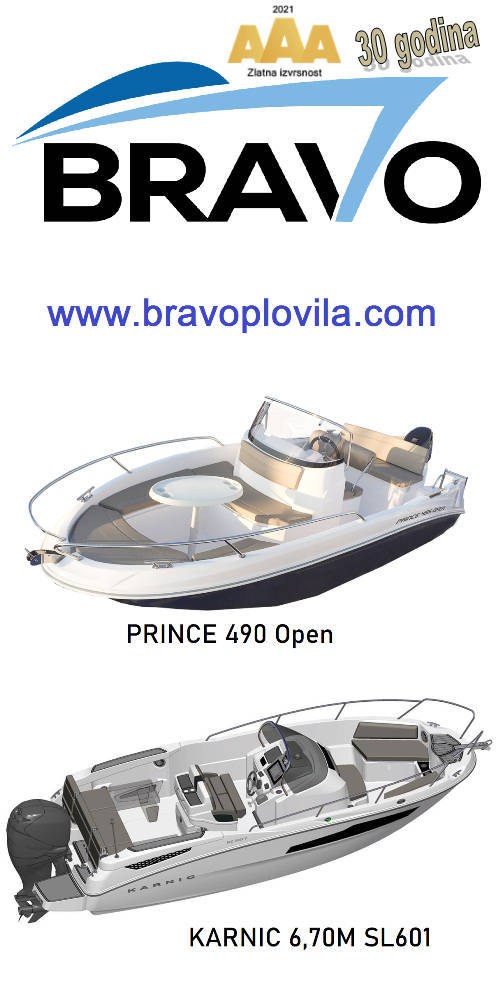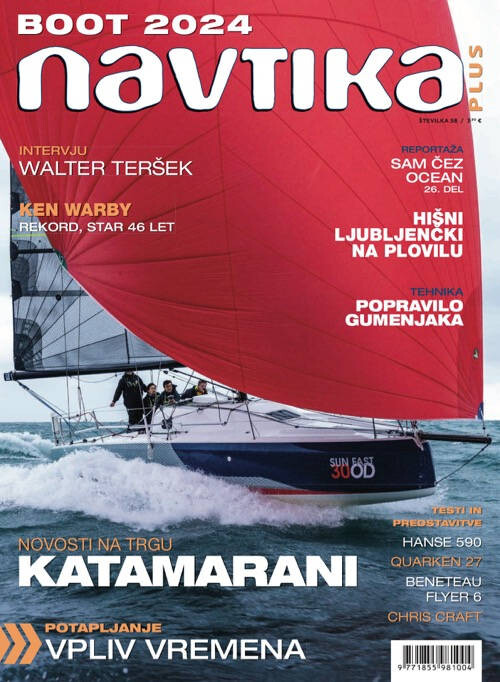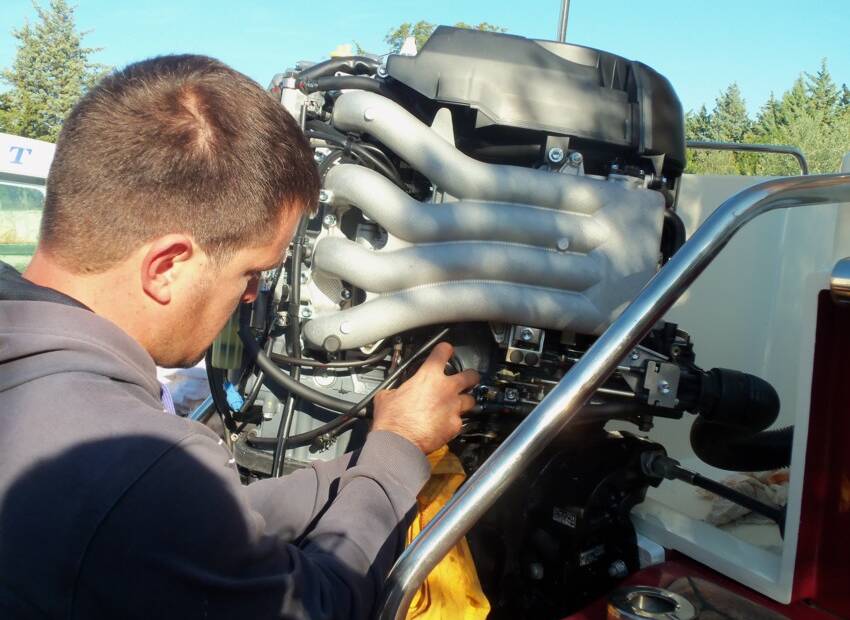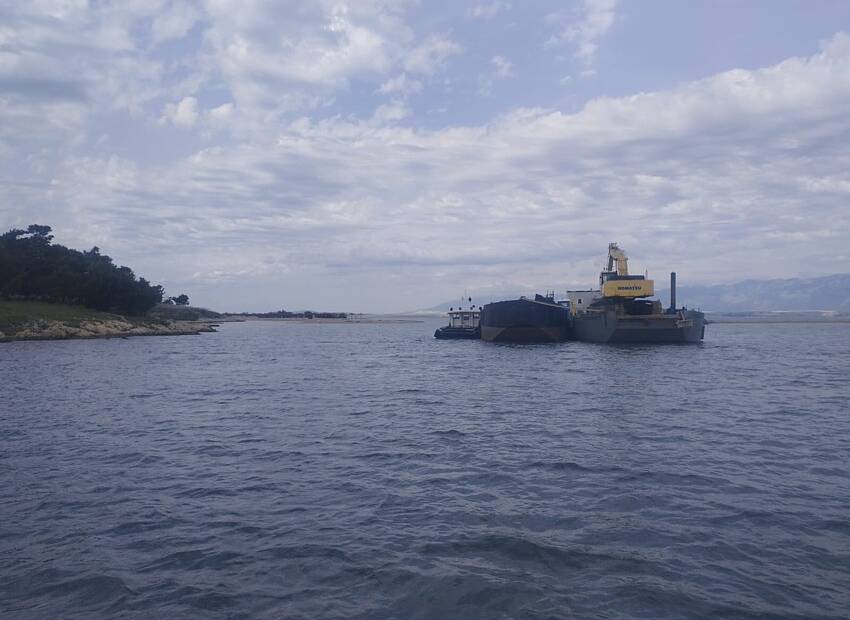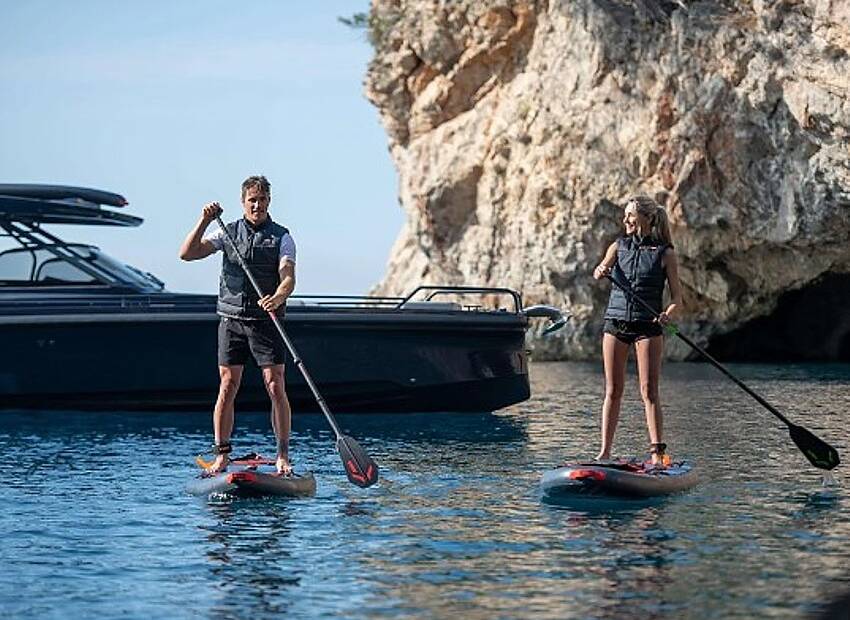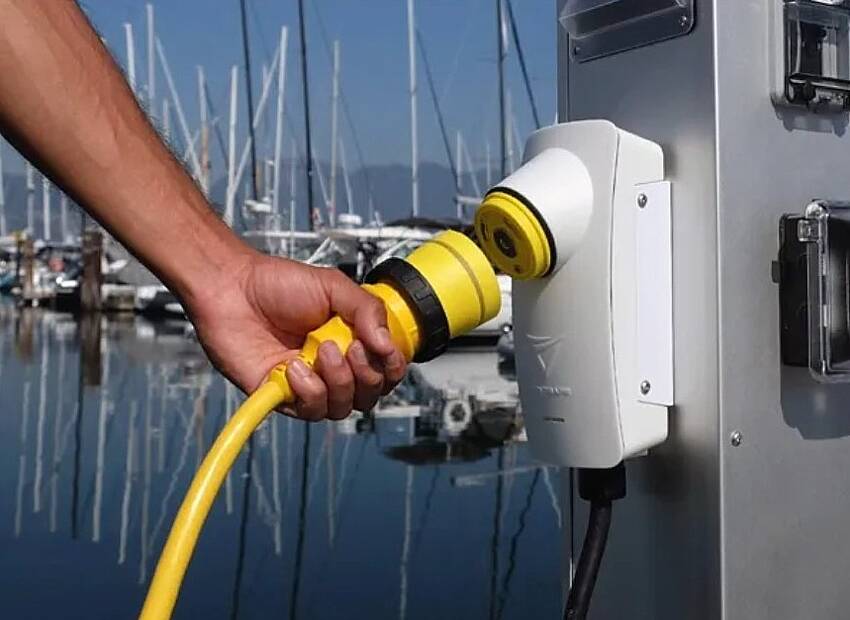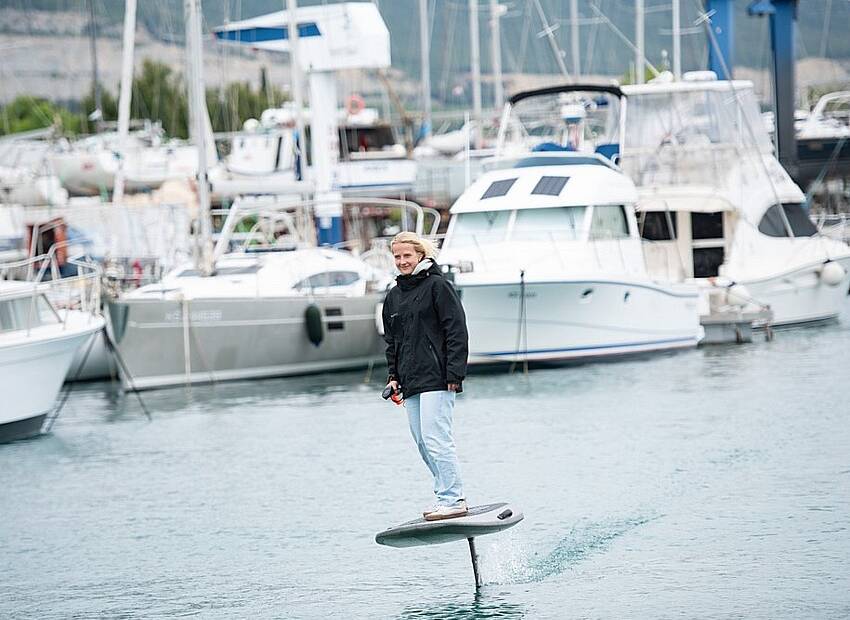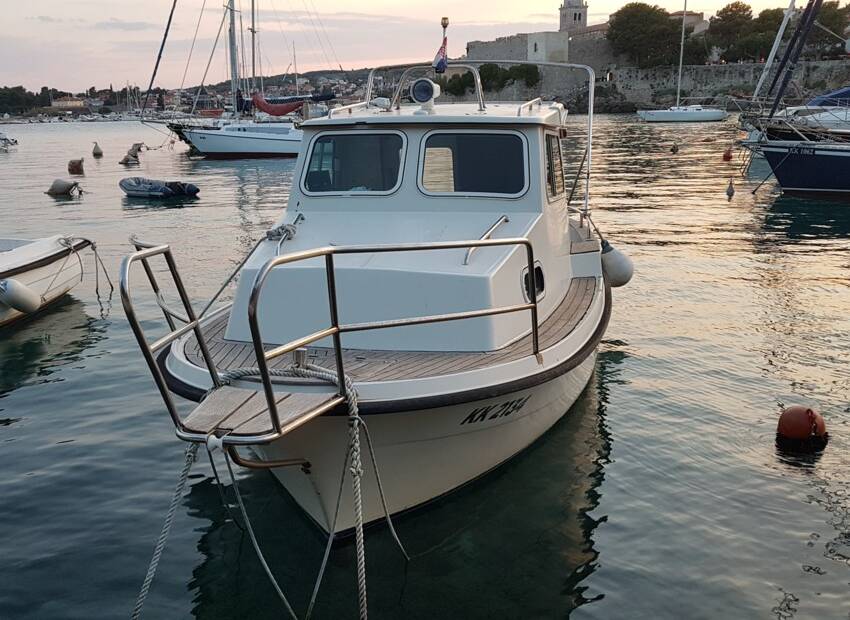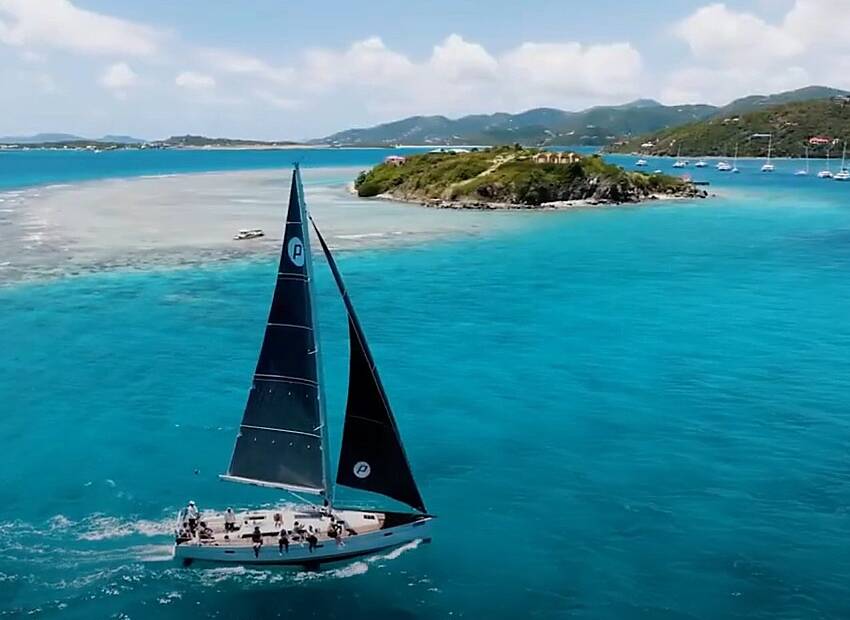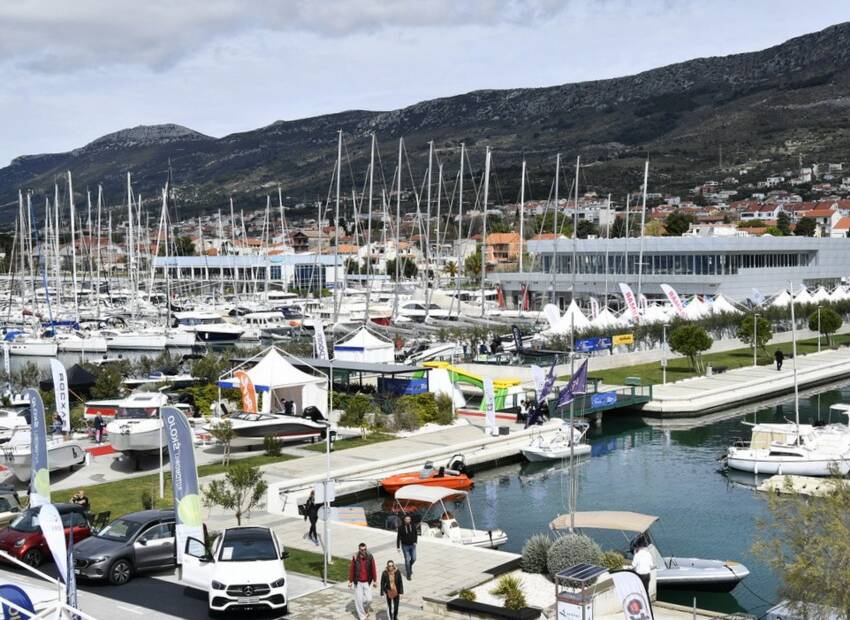The Sydney GTS37 and GTS43 are designed to be fast, safe and comfortable with a fully fitted interior, engineered to ISO Standards, Category A. These yachts feature large open cockpits that is synonymous with Sydney Yachts. This \'trademark\' feature enables simple and efficient crew manoeuvres and makes entertaining on deck comfortable and effortless.
Concealed within the performance design is the finely appointed interior offering a warm and welcoming onboard ambience. Both the Sydney GTS37 and the GTS43 have a comfortable, practical interior with three double cabins, a fully enclosed head, a well appointed galley and navigation area. There is ample storage space for cruising and the practical interior is perfect for racing, both round the buoys or offshore.
The deck layout is designed to suit both racing and cruising, with excellent ergonomics when beating upwind or enjoying a drink on anchor. With clean lines and an uncluttered deck layout, these yachts are a real pleasure.
A refined double spreader rig with non-overlapping headsails ensures ease of handling. It is responsive and a pleasure to sail. The easy to sail format translates to less crew for racing and ease of cruising.
The Sydney GTS range is designed for winning results under the IRC measurement system. Offering exhilarating performance in an easy to sail format a Sydney GTS is a keen favourite for sailors who enjoy competitive shorthanded racing and cruising. Equally, the dynamics makes her a keen favourite in the ever- popular twilight races.
Designers Comments
Ker Design has been selected to provide the designs for the new GTS range. Darren Williams, the Managing Director of Sydney Yachts and a keen yachtsman himself felt that the market wanted more performance rather than just another heavyweight windward-leeward specialist, so having sailed on the Ker 53 Cruiser-Racer and experienced the genuinely high performance cruiser-racer concept Sydney Yachts asked Ker Design to put the latest ideas and technology into the new GTS range.
We first explored the low-road in weight, putting on a fin without bulb in order to reduce the required sail area and keep the rating down, but aside from being competitive we couldn\'t really get excited about the concept and couldn\'t see why the end customers would either. We were stuck in a middle ground with a modern hull shape and form stability in spades but still too heavy to really take advantage of the advanced shape.
So, not satisfied, we threw away what we\'d done and went back around the design loop, much lighter with the overall displacement, bulb keel, taller rig. When we computed the drag with the CFD codes (we mainly used Dave Egan\'s Flowlogic code, for which Ker Design recently acquired a 64 processor cluster to allow us to create a full drag matrix) and crunched the numbers in the VPP, we found that not only had we made a significant gain in speed, but the handicap competitiveness was also improved, which was later confirmed by the trial certificate.
General Design Philosophy
There is an easy formula for designing a small IRC yacht, long practiced in the UK in particular, and it goes like this: Maximise displacement to increase stability, narrow waterline to minimise wetted area, and put just enough upwind sail area to survive in the lighter winds against the main competition.
You can even take it a stage further and pile in some extra go-slow features to reduce the hull factor, dispose of the bulb and make the sail area even smaller. The reason this all works quite well with smaller boats is to do with a distinct \'hull speed\' that usually occurs when a boat makes waves at bow and stern and sinks into the trough between.
Smaller boats typically have a relatively high Displacement to Length ratio and they therefore have relatively greater difficulty in exceeding \'hull speed\', so the philosophy outlined above is to reduce the rating relative to the boat\'s length and therefore not need to exceed the hull speed in order to sail to the boat\'s rating.
Combining with this was a centreline measurement of the transom overhang which led to flat IACC-Style transom sections as designers pushed up the middle of the transom but left the corners where they were, to maintain heeled length. Such was the conventional Wisdom regarding IRC and almost anyone could join in the game without too much difficulty.
So, given the above, then why are we now choosing to design properly \'fast\' IRC yachts under 45ft? The secret lies in the increasingly fast and accurate design tools which have been developed and validated for AC projects but clearly work equally well for IRC or other types of design projects.
They allow us to explore and create shapes which have relatively greater power compared to their drag, or lower drag relative to their power and after considerable exploration we have found slightly to our surprise that we are able to create both fast and competitive smaller IRC yachts with the caveat that the yachts need to be well engineered and built to allow sufficient ballast.
Research and development
Ker Design is committed to continually improving its designs through ongoing research. Using the extensive Americas Cup technology at its disposal Ker Design continues to develop an improved understanding of the science of yacht performance and applies this to its new IRC designs.
The hull shape used for the GTS range is the product of Computational Fluid Dynamic (CFD) research, a significant number of design options were analysed leading to some surprising and highly exciting conclusions. The final shape has shown to be significantly more efficient than the already highly successful previous generations Sydney Yachts.
As said the appendage shape and sizing for the new GTS range are the product of considerable CFD and other research. In particular research has focused on ensuring forgiving performance and handling characteristics.
CFD Results
Worrying that our in-house CFD results were too good to be true we asked Charles Crosby of Cape Computational Fluid Dynamics to compute some important drag points using different CFD software, but with the differences coming in within 0.5% of relative drag, (which typically equates to only one or two IRC \'points\' of performance), and in the safe direction, this just added confidence that we were on the right track.
The result is the GTS yachts which are able to match the faster and bigger cruiser-racers around the track in all conditions, plane away from them as the wind increases and give a very good chance of winning on handicap.
An important side-benefit of this development is that whereas the narrow canoe hull forms of the contemporary IRC cruiser-racers are disliked by the ORCi rule, the more voluminous hull form type we have used in our GTS range is well favoured, as well as providing more living space below.
Aside from the general performance characteristics, other features we incorporated into the GTS range are the ergonomic cockpit layout, twin wheels, carbon rudder stock, stainless steel keel and mast support structure for stiffness and reliability.
The Sydney Yacht brief was to provide a boat for those who have a wish to do a bit of cruising, yet sail fast and competitively, but it also works well as an option for those that want to race the fastest cruiser-racers on-the-water, as well on the handicap board.
1. Advanced design technology is allowing us to create light and fast yachts that perform very well under IRC.
2. At the mid to lower size end of the rule, IRC actually does quite a good job of rating fully optimised boats of different types, so if an owner wants to go slow in a larger boat he can also choose that option. Our studies at the very large end of the rule indicate that the only option is clearly to be Fast… and we don\'t hear many complaints about that.
Photo: Sydney Yachts
| Technical details | |
| Producer: | SYDNEY YACHTS (AU) |
| LOA: | 37'27 ft |
| LOA: | 11,40/13,10 m |
| Beam: | 3,52/4,09 m |
| Draught: | 2,30/2,70 m |
| Displacement: | 5.350/6.700 kg |
Related articles

Swan 48
Jedinstveni dizajn i profesionalna izrada koja stoji iza jedrilice Swan 48 čine je kompletnim regatijerom za oceanska krstarenja




